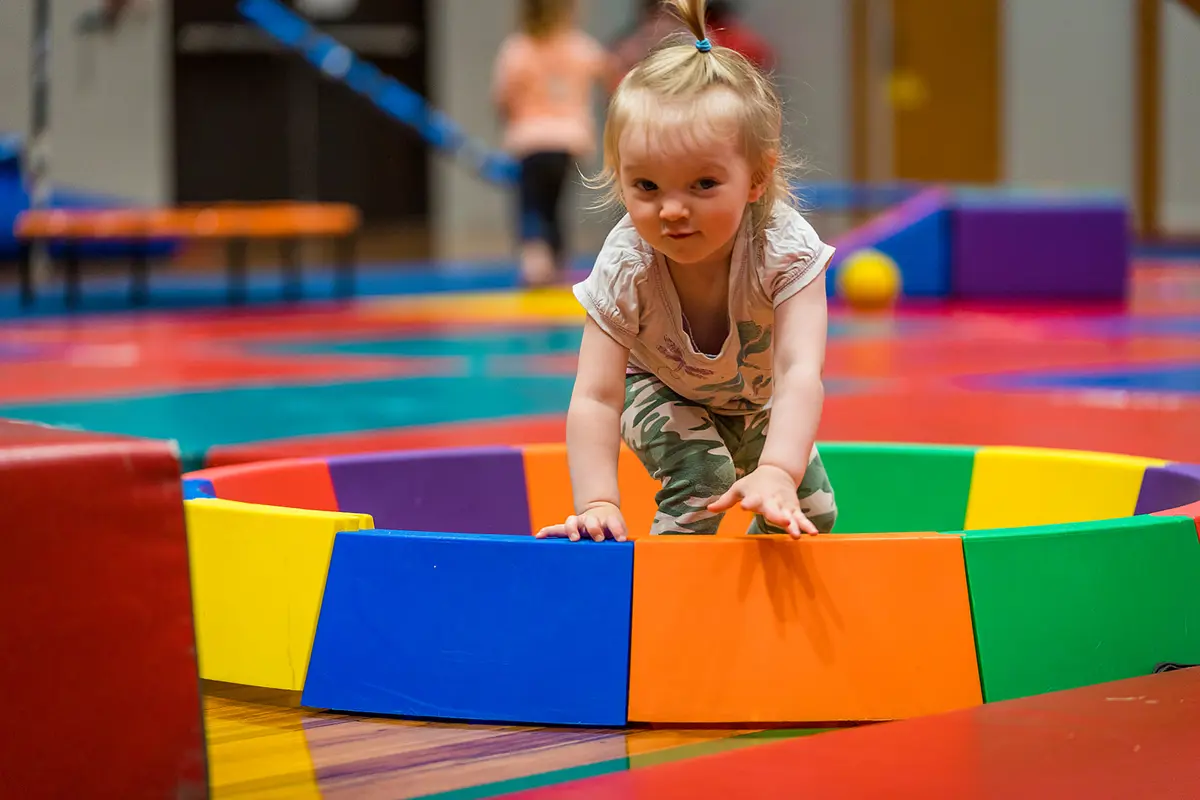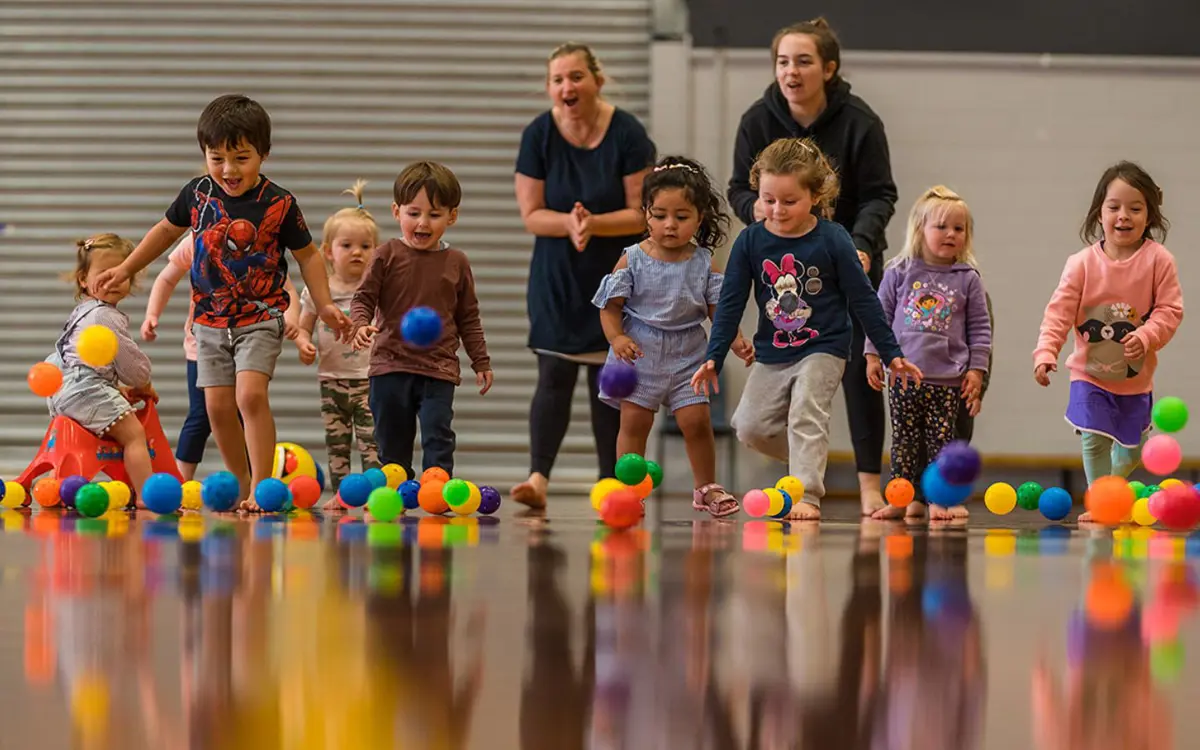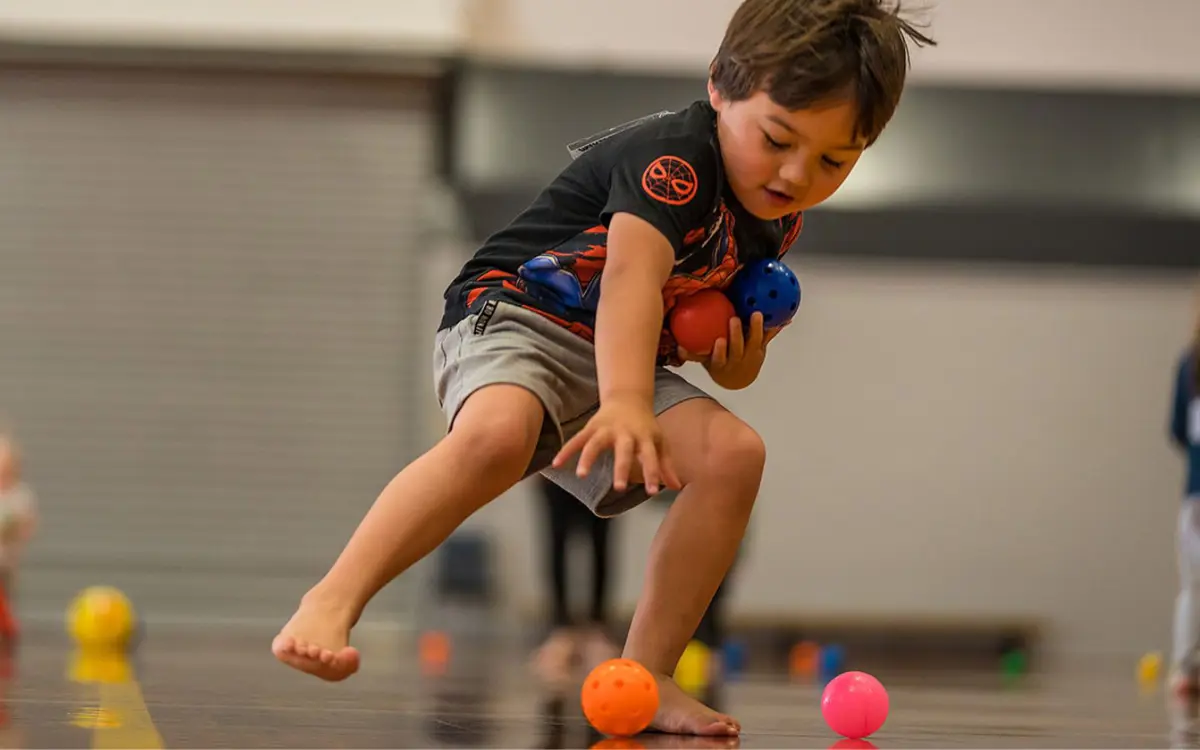-
Movement is essential in the first five years of our lives as it builds critical pathways in the brain. To help your child’s development, as well as support their mental and physical wellbeing, we’ve created a collection of fun activities you can do at home.
-
Freeze dance
Put on some fun tunes and dance like no one is watching. Every now and again press pause and everyone has to freeze. This is a great way to warm up for some activity!
Develops body rhythm, body awareness, control and listening.
Horse play
Set up a small oval track and race around like horses. Ask the children to listen to the noise your feet make when you gallop to help develop their listening skills. Give your 'horse' a set of instructions to follow such as:
- two steps forward
- gallop around the room
- stomp your feet or high knees.
You can also set up a jumping course where your 'horse' gallops around and jumps over the obstacles.
Develops body rhythm, listening, movement, control, body awareness and imagination.
Animal walks
Use your imagination to demonstrate some ways of moving like animals and ask your child to copy you. After a few rounds, ask your child to call out the animal. Race each other down the hall as these animals. For example a bear, snake, crab, horse, rabbit or dinosaur.
Develops body awareness, midlines, imagination and movement.
Ooey gluey
Pour some imaginary glue on your child’s hands and then get them to touch a part of their body and pretend their hands are now stuck there. Ask them how their body moves differently with their hands stuck there? How can they move around? Sprinkle some imaginary glue disabler on so they can move their hands and then try again with a different body part.
Develops body awareness and control.
Tunnels
Create a tunnel with a mat or with furniture and blankets. Can your child crawl through the tunnel to you at the other end? You can roll a ball through the tunnel for them to follow or give the tunnel a gentle shake as they move through.
Have some more fun by playing peek-a-boo or, with your child inside the tunnel, put on a silhouette puppet show at one end with some toys.
Develops body and spatial awareness.
Big and small
Ask your child questions about large and small objects, getting them to act out the objects. Some examples include:
- Can you be as big as a tower? Reach on tippy toes to the sky.
- Can you be as small as a ball? Curl up on the floor.
- Can you be as big as a bear? Stand arms and legs stretched wide.
- Can you be as flat as a pancake? Flat on the ground.
Develops posture, spatial and body awareness.
The floor is lava
For a timeframe of your choice whenever you say ‘the floor is lava’ everyone has five seconds to get themselves off the floor. You can set up safe objects to jump on prior to starting the game.
Develops language, balance and spatial awareness.
60 seconds
Here are some ways you can develop your child's understanding of time.
Explain to your child that you want to see how much they can do in a minute. Time a minute so they get an understanding of how long the time is, then ask them to do tasks when you time for another minute to see how much they can do.
How high can they build a tower in a minute? How much sand can they put in a bucket? How far can they get round the park? How many swings, hops or jumps can they do? Can they stay still for a minute?
Develops temporal awareness, language and comprehension.
Runaway balloon
Have one balloon blown up and held by your child. Have your second balloon blown up but not tied off. Explain there is a balloon on the loose and you want to know where it lands. Release your second balloon and see if they can track the balloon without letting go of the one in their hands.
Develops eye-tracking, control and spatial awareness.

